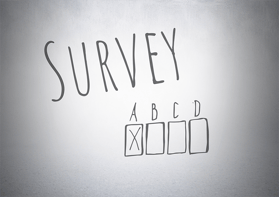How to Assess Training Needs
Having a good foundation in any process often will assure success! Training needs assessment establishes the framework for evaluating your organization's requirements and the best way for your staff to acquire the essential training they need.
 A Training Needs Assessment can be performed at any time, but they are most commonly performed after hiring, during performance evaluations, when efficiency improvement is required, for career advancement strategies, for succession planning, or even when organizational changes necessitate making required reforms to employees' jobs. It is important to conduct these evaluations regularly to identify your
A Training Needs Assessment can be performed at any time, but they are most commonly performed after hiring, during performance evaluations, when efficiency improvement is required, for career advancement strategies, for succession planning, or even when organizational changes necessitate making required reforms to employees' jobs. It is important to conduct these evaluations regularly to identify your
organization's training needs, employees' knowledge, and abilities, and training program effectiveness.
Why Should You Perform Training Needs Assessment?
Here are some reasons why businesses should prioritize how to assess training needs:
• To train the appropriate workers using the proper methods
• Reveal any skill gaps
• Identify new training techniques or approaches
• To increase the return on investments from training activities
How to Perform a Training Needs Analysis
Before planning and implementing your training program, review these stages of a training needs analysis:
Determine Desired Outcomes
The first stage in determining training requirements is to define your organization's and departments' objectives, as well as its priorities, to decide which behaviors must be modified to attain those goals.
Identifying business requirements allows learning teams to identify competency and skill gaps, identify teams that need training, evaluate various training choices, and unearth possibilities that can aid the success of workers, business departments, and the whole company.
The following are critical questions that you must answer at this stage:
• Does your company need this evaluation?
• Why are you conducting it?
• What is your ultimate objective?
• Will a training course help to achieve your intended business outcome?
Identify Relevant Competencies and Work Behaviors
Once you know your targeted business results, the second stage is to define the key competencies that the target audience must have. In addition, it is critical to identify the behaviors that align with them.
For example, your company's goal statement can be to deliver the greatest client service in the market to fill a void that none of your rivals have addressed. The core competence, in this case, is to provide the best customer experience in the sector, which is the ultimate corporate aim. Identifying the supporting behaviors such as how a contact center employee positively communicates with a customer and what the behaviors look like.
Determine Skill Gaps
The third stage is to identify the knowledge and abilities needed to meet the behavioral aspects that have been identified. Now that you've got the skills needed, the next stage is to examine the existing skill level your employees have - often known as a skill gap study.
This is significant, since various team members have varied skill sets and, as a result, require varying levels of training. For instance, employees who have worked in your company's customer service department for 3-4 years will have substantial familiarity with your organization's CRM application. These team members may not be the main target audience for CRM training, whereas newer staff may need extensive specialized training on the program. or in contrast, you may also find these experienced team members have picked up bad habits, so conducting a training needs assessment could be required.
A skills gap study determines if your workforce's present abilities satisfy your goals. It provides a list of talents you already possess, ones you need to enhance, and need to grow. From there, you may use training programs to fill the gaps, resulting in a team of trained individuals ready to contribute towards your organization's goals.
Once you have completed these stages you can consider other key factors such as:
Training Schedule
Once you've identified what information, skills, or attitudes your workers need to improve to meet stated goals, it's time to create a comprehensive training plan.
Here are some key things to determine when developing a training program:
• Determine the training program's planned completion date
• Establish priorities for private sessions and groupings to schedule them
• Establish a training budget
• Determine if the training will be conducted externally or internally.
Involve Key Stakeholders
Technology is rapidly advancing, and businesses are trying to keep a footing in an extremely competitive market. Some talents are becoming permanently outdated because of the digital revolution, whereas others are more in demand than ever. These considerations make efficient and effective staff training more important than ever for businesses seeking to retain a competitive advantage.
According to a global study of CEOs, 80% are concerned about access to vital talents, and more than 50% struggle to locate competent new workers. Employee training programs and learning and development departments are effective instruments for onboarding and retaining employees.
It is not as straightforward as purchasing some courses and requiring staff attendance to launch a new training program. Conducting a training needs assessment is a vital first step as companies that rush ahead without sufficient planning frequently suffer from mismatched company goals, overburdened L&D teams, and an absence of C-suite buy-in. Each of these might derail your training regimen from the start.
Align Training with Company Objectives
To be regarded as effective, a training program for employees should contribute to your company's needs. Determine the company's short and long-term objectives and devise a training strategy to support those goals. Set up a method for detecting and prioritizing training requirements that meet your goals, and then utilize the results to drive future learning initiatives.
If you found this blog helpful and want to learn more,
be sure to download our FREE eBook:
6 Phases of a Training Needs Analysis


